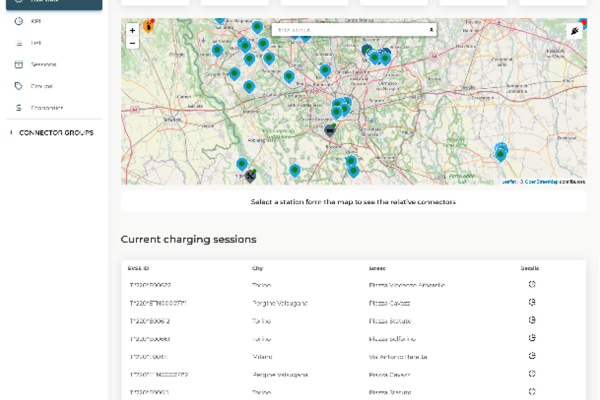THE past year has been a challenging time for SMEs in the UK. Consumer behaviour has shifted with online sales in 2020 hitting a 13-year high since the start of the pandemic, and 46% of UK consumers purchased a product online that they would have previously only ever purchased in a store.
The impact of this on UK SMEs has been dramatic with 57% of the UK’s small- and medium- sized businesses adapting their business model since the start of the coronavirus pandemic .
SMEs have turned to digital and tech solutions to transform their businesses to be more agile and meet customer needs in this new economic landscape – everything from enhancing their online presence, taking back-office systems online or setting up more direct-to-consumer capabilities including incorporating delivery vehicles or fleet vehicles to support their changing business models.
With the shift in consumer behaviour over the past 12 months, it’s no surprise that delivery services have seen a drastic increase. According to a study by Fleet News even our general attitudes have changed, with 35% of those surveyed saying they don’t know what they would have done during the lockdown without delivery people. And whilst 2020 was an unprecedented situation, the movement towards having more delivery vehicles on the road was already an upward trend.
With an aging population who are restricted in their movements, the growth of the out-of-home market for places like restaurants, and the weekend mandatory shopping being displaced by family activities, conditions for a delivery service are ripe.
Setting up a delivery service from scratch? What’s the first step?
Creating a delivery service isn’t just about acquiring delivery vehicles. Business owners need a good idea that appeals to people with purchasing power. Delivery vehicles can work like well-oiled machines if the services are in demand and hitting the right customer groups. Refining where your investment should be and what you are offering is the first place to start.
Operators of a delivery service can either transport everything or specialise in one product group. There is no right or wrong option: it depends on the circumstances.
Acquiring a vehicle or vehicles for delivery
There is a wealth of options to consider when deciding which vans or cars are right for your business. Not only do you need have a good basic knowledge of fleet management, but you also need to understand the legal formalities of leasing or purchasing vehicles.
- Using a vehicle you already own
If you already have an established business, and you are looking to reach a wider customer base, you might not need to invest money into a vehicle. Converting a vehicle that you already own into a company car or van for delivery use could be the most cost-effective option.
- Purchasing a used vehicle
If using your personal vehicle is not a feasible option, you could obtain the vehicle you need by purchasing used rather than new. Many business owners do not consider the total cost of ownership when they purchase a new vehicle, with 9 in 10 companies not knowing the actual cost of their company cars when they buy them. Opting for a used vehicle could soften the cost of investment. Using a TCO (total cost of ownership) calculator to show you how much of your budget will go towards vehicle expenses will help you make the right decision.
- Leasing a vehicle
If you have considered the TCO and thought about your business plan, acquiring a new vehicle could be a good option. In this case, leasing rather than buying outright should be considered.
Now you have your fleet, how do you manage it?
Regardless of how you acquire your vehicles for delivery, once you have them, you will want to manage them properly. Fleet management refers to the administration, monitoring and coordination of a unit of vehicles (or a fleet). It can consist of purchase, lease management, maintenance, licensing and insurance handling, legal compliance, damage and accident management, fuel management, telematics, and driver management.
Good fleet management will not only improve efficiency and productivity, but it will also help to reduce costs (such as fuel and driver time), reduce your carbon footprint, and improve customer satisfaction.
A critical component of fleet management technology is vehicle tracking – made possible by GPS technology. A piece of hardware needs to be installed in fleet vehicles which then records data at regular intervals and saves it for later retrieval or forwards it to a server. The data gives an exact location of all vehicles in a fleet, at all times.
By having a GPS-live fleet, you can provide customers with accurate ETAs, collection / drop off confirmations and proof of deliveries. 84% of consumers have said that customer service was a deal-breaker when buying a product, so providing quality customer service not only encourages existing customers to continue to buy from you, it may also create a domino effect.
For UK-based medical and counselling website Talk to a Doctor, installing fleet management software across their six-strong fleet of responder vehicles has meant their SLAs around response times dropped from hours to minutes and has enabled Talk to a Doctor to meet 100% of their ETA targets, ensuring the very best service for their clients and avoiding penalties imposed if ETAs are not hit.
On average, your fleet costs could be cut by about 15% – through cutting of fuel costs. Tracking solutions can locate the nearest divers to appointments, optimise routes and identify drivers that are speeding or driving outside of business hours. By helping to reduce fuel costs, you will also cut your carbon footprint.
If you are considering a fleet to enhance your SME or want to find out more about how to effectively manage a fleet, do take a look at Vimcar’s Fleet Assets page here.







